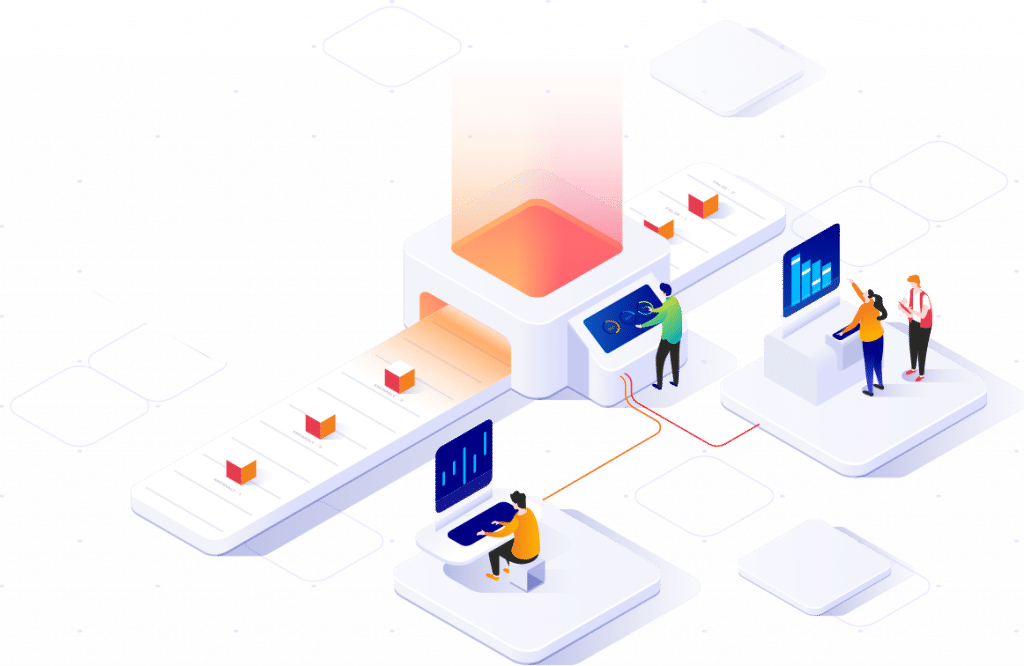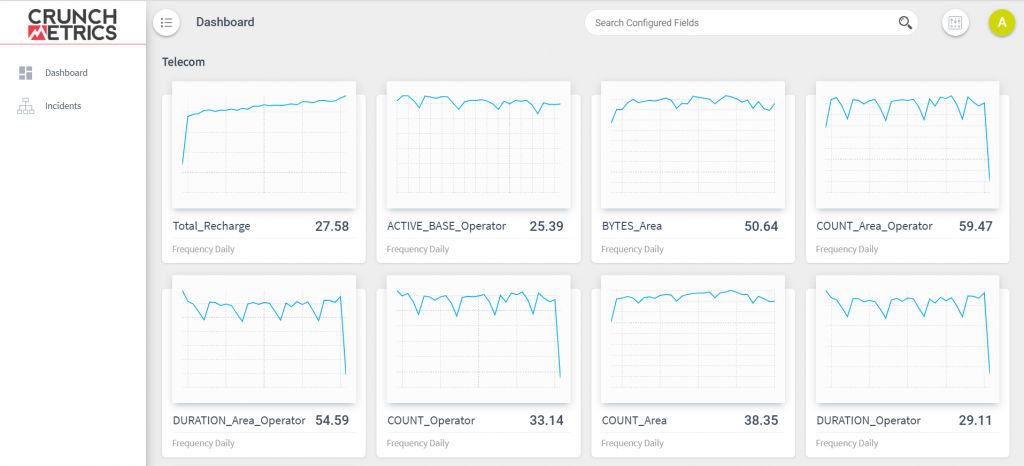With AI, machine learning, big data, and the likes being thrown around like buzzwords quite often, it’s easy to miss out on how these things mark fundamental shifts in how businesses operate. And how do the companies make sense of all the rich data to ensure that it’s serving customers better? Well that’s where Business Intelligence software comes in. Yet, most BI software provides the analysis afterwards and not real-time, which makes it difficult to fix any issues that may emerge. Enter Crunchmetrics, that aims to offer real-time anomaly detection. Launched as a standalone SaaS product by the parent company Subex, CrunchMetrics is an Indian company that’s catering to the clients across the globe. We catch up with its Head of Strategy and Products, Rohit Maheshwari, to talk about why Subex launched CrunchMetrics as a separate company, how does it stand out in the hyper-competitive BI tools space, and more.
PS: the interview has been edited for the sake of brevity.

Table of Contents
1) Before we begin talking about CrunchMetrics, can you tell us about your journey into the world of SaaS?
I come from the telecom data analytics industry with over 20 years of experience in Solutions Consulting, Business Development, Sales, and Product Management. I have a keen interest in AI and its application in developing impactful products, and I’m passionate about building solutions from scratch. At Subex, I’ve led business transformation projects for clients across the globe, and through CrunchMetrics, I continue to drive my passion for delivering winning, intelligent AI-driven products.
2) What were the insights that led you to launch CrunchMetrics as a SaaS software, and keep it separate from the parent company Subex?
Our journey in the space of AI-driven analytics began a few years ago when we started helping our customers find answers to questions that had no obvious answers. Data holds the answers to some of your most complex business challenges and untapped revenue opportunities. Be it a glitch in the app that needs immediate attention or a market trend that impacts your customers, data gives you visibility on critical incidents that affect your revenue.
However, we realized that most of the existing solutions in the market focused on a retrospective approach to data ingestion and analysis, leaving enterprises with little scope to remediate incidents in real-time. When it comes to data intelligence, there’s a critical need for accuracy, speed, agility, and clear visibility to identify root causes for issues as and when they occur. Autonomous anomaly detection powered by Artificial Intelligence and Machine Learning gives online businesses real-time visibility on performance metrics, making it easy to spot risks and opportunities in real-time.
At Subex, we succeeded in delivering AI-driven real-time analytical capabilities to telecom customers and we realized the need for a multi-vertical solution in the market. Our goal was to provide flexibility to enable real-time anomaly detection on time-series data of any business and we wanted to keep this new product as a separate brand entity.
We built CrunchMetrics using our expertise and technological capabilities gained over a decade of experience in the Telecom Data Analytics sector with over 150 global customers in 90+ countries. That’s how we launched CrunchMetrics – as an automated, real-time anomaly detection software for dynamically and proactively detecting business-critical anomalies in complex streaming data sets of any business.
Our AI-driven platform automatically looks through billions of records of streaming data from various sources, identifies unusual patterns, intelligently correlate these patterns with their context of occurrence, and flags outliers that can cause business impact – all in real-time.
3) Could you share some of the use cases for CrunchMetrics for us to understand its capabilities better?
By enabling ‘Business Opportunity Discovery’ through anomaly detection powered by Artificial Intelligence and Machine Learning, CrunchMetrics enables businesses to detect risks and opportunities in real-time, facilitating immediate issue resolution. This could be applied to detect anomalies in time-series data of any business vertical or function. Some common examples would be:
1. Enterprises can monitor and identify the root cause of issues such as payment failures on their app at a granular level to prevent revenue loss and security breaches.
2. Organizations can track anomalies in customer data such as usage patterns, conversion rates, spending rates, and churn rates to discover opportunities to up-sell and mitigate risks if any.
3. Advertisers can use real-time anomaly detection to monitor and analyze their marketing funnel to gain a better understanding of the conversion path taken by users.
4. EdTech companies can actively monitor content performance and customer behavior metrics to improve their course content and content recommendation system to deliver a great learning experience.
5. In the case of e-commerce platforms, the same technology could be used to monitor metrics such as sales, price, sales volumes, the number of transactions, and other elements to track price changes on the website and get alerts in real-time for pricing glitches and other business-critical incidents.
In short, AI-driven anomaly detection can be used to analyze time-series data of any business function.
4) Could you tell us about CrunchMetrics’ evolution since its launch last year? What’s your user base like?
We launched CrunchMetrics in 2019 as an autonomous real-time anomaly detection platform. Since inception, our focus has been to equip teams with the analytical tools and capabilities they need to make rapid, profitable operational decisions. As such, we have focused extensively on developing advanced platform capabilities to monitor streaming data sets dynamically and proactively at a granular level in real-time.

Over the period, we have further added powerful analytical features such as Multivariate analysis, auto-clustering and insights generation for low latency, and automated operational decision-making. To help business users understand their data better and identify the root cause of unexpected anomalies, we have also added new capabilities such as contribution analysis and smart insights.
Our current customer database includes on-demand delivery apps, e-commerce platforms, online travel sites, and payment gateway apps. As we scale, we will continue to innovate and add new features that can help our customers make fast operational decisions, mitigate risks, prevent revenue loss, and gain visibility on emerging trends. In addition to frequently adding new support features, our team also offers customizations on the platform to meet specific user requirements.
5) Which are the biggest markets and industries for CrunchMetrics?
CrunchMetrics provides users with adequate use cases that can meet anomaly detection requirements for a wide range of business functions. Enterprises across industry verticals including e-commerce, EdTech, telecom, AdTech, and FinTech leverage the real-time anomaly detection capabilities of CrunchMetrics to grow their business.
6) How does CrunchMetrics stand out from the competition, considering business intelligence software provides anomaly detection as a feature and a wide range of functionality?
CrunchMetrics leverages novel innovations in Machine Learning and Deep Learning to accelerate business outcomes by detecting real-time anomalies in business data. Our algorithm efficiently handles business-specific cyclical variations, incorporates real-time feedback from users to models, and self-evaluates and iterates over true targets.
We’ve benchmarked CrunchMetrics against some most popular open-source algorithms and have consistently outperformed. The platform stands out through its unique combination of anomaly detection, multivariate analysis, and clustering ability. It automatically triggers insights acquired from newer incidents. As the database grows bigger, the number of patterns identified also increases, leading to more accurate and consistent output.
7) Amidst the ongoing pandemic, has CrunchMetrics seen any change – in terms of its usage increasing or decreasing or customers finding new use cases?
With the COVID-19 crisis, the world is witnessing a greater demand for online products and services, especially essentials. The biggest challenge for online businesses, particularly in the on-demand app segment, is scaling the current demand with existing resources. Real-time anomaly detection plays a critical role in optimizing application performance and boosting operational dexterity required to sustain in such challenging times. When it comes to hot or streaming data, companies are now proactively investing in AI capabilities to monitor, manage, and remediate critical incidents that affect business efficiency, especially in the e-commerce sector. There is a greater need today to understand customer behavior metrics.
8) As a SaaS software company building out of India for the world, what has been your biggest learning(s)?
There are a lot of sophisticated BI tools out there that help in converting data into meaningful information. However, what they enable is a post-occurrence analysis of your data – and at the volumes and velocity at which data is generated today, this is just not enough. A lot of companies both in India and outside focus on conventional methods based on a reactive approach of responding to alarms triggered by static thresholds. This fails to suffice the needs of modern-day organizations.

Hence both Indian and overseas companies are now more aware of the need for real-time analytics in understanding customer metrics, in driving business efficiency and attaining operational dexterity. However, when it comes to implementing AI-driven analytics, there are some challenges such as inadequate knowledge of business use cases and concerns on the compatibility of existing databases and systems.
When we approach new clients, especially the ones overseas, we look at their specific business challenges, take into consideration their existing database systems before suggesting a mechanism for monitoring their performance metrics. We try to educate them on ways they can use autonomous anomaly detection to find critical deviations in KPIs and to identify the root cause of issues. These issues impact online user engagement and sales. Augmented analytics helps businesses understand this correlation and remediate incidents in real-time.
9) What are your favorite SaaS products out there?
With current work from home situation, all of us at CrunchMetrics are now actively using collaboration tools like Microsoft Teams. I also like Zoom for conducting meetings and webinars. I find project management software such as Aha to be quite helpful for working on product roadmaps and projects.






